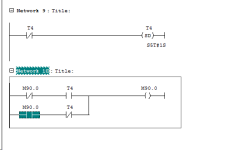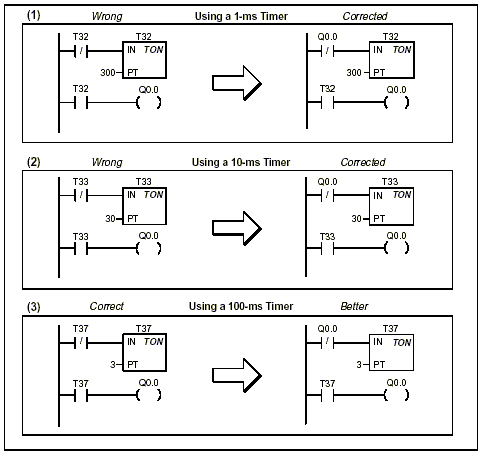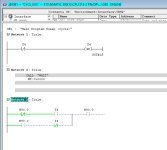sirale
Member
Hi, I just want to use a timer to make a pulse that lasts one scan (cycle) every, say, 1 second. That is, I want for example M0.0 to be '0' for one second, then set to '1' for one scan, then set to '0' for one second again, and so on. What's the easiest way to achieve this?
Using a S7-300 PLC and LAD/FBD.
Thanks in advance.
Using a S7-300 PLC and LAD/FBD.
Thanks in advance.















